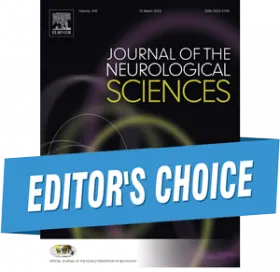Open search
AI and machine learning in aneurysmal subarachnoid hemorrhage [JNS454 Editor's Choice]
20 Nov 2023

Image: iStockphoto.com/ArtHead-
Authors: Saif Salman, Qiangqiang Gu, Rohan Sharma, Yujia Wei, Benoit Dherin, Sanjana Reddy, Rabih Tawk, W. David Freeman
Editor's Choice
Journal of the Neurological Sciences. REVIEW ARTICLE| VOLUME 454, 120832, NOVEMBER 15, 2023
DOI: https://doi.org/10.1016/j.jns.2023.120832
Highlights
-
Unlike ischemic strokes, SAH lacks a holistic approach.
-
AI and ML methods offer promising tools that can accelerate stroke systems-of-care.
-
AI based models can detect SAH within minutes, surpassing human beings.
-
Such models bypass time consumed during imaging and interpretation.
Aneurysmal subarachnoid hemorrhage (SAH) is a subtype of hemorrhagic stroke with thirty-day mortality as high as 40%. Given the expansion of Machine Learning (ML) and Artificial intelligence (AI) methods in health care, SAH patients desperately need an integrated AI system that detects, segments, and supports clinical decisions based on presentation and severity.
This review aims to synthesize the current state of the art of AI and ML tools for the management of SAH patients alongside providing an up-to-date account of future horizons in patient care.
A total of 507 articles were identified. Following extensive revision, only 21 articles were relevant. Two studies reported improved mortality prediction using Glasgow Coma Scale and biomarkers such as Neutrophil to Lymphocyte Ratio and glucose. One study reported that ffANN is equal to the SAHIT and VASOGRADE scores. One study reported that metabolic biomarkers Ornithine, Symmetric Dimethylarginine, and Dimethylguanidine Valeric acid were associated with poor outcomes. Nine studies reported improved prediction of complications and reduction in latency until intervention using clinical scores and imaging. Four studies reported accurate prediction of aneurysmal rupture based on size, shape, and CNN. One study reported AI-assisted Robotic Transcranial Doppler as a substitute for clinicians.
AI/ML technologies possess tremendous potential in accelerating SAH systems-of-care. Keeping abreast of developments is vital in advancing timely interventions for critical diseases.
Copyright © 2026 World Federation of Neurology. All rights reserved.
Web design by Tribal Systems








